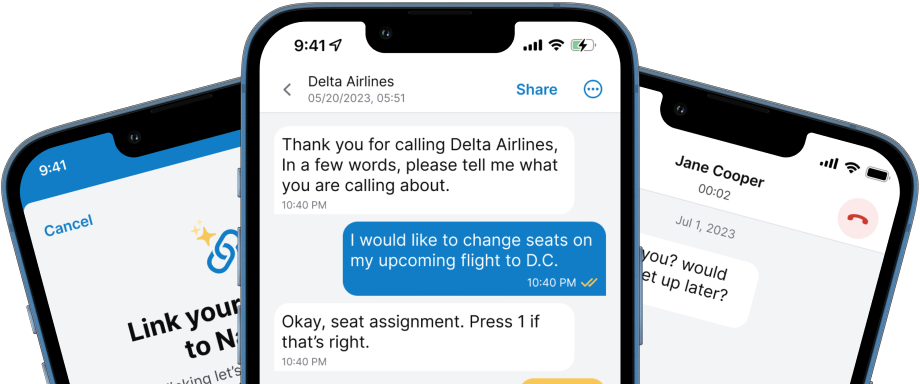Setting Up An Inclusive Workplace For Deaf Employees
Learn everything you need to know about setting up an inclusive workspace for deaf and hard-of-hearing employees right here!

When we look around us, we slowly but surely see a society that increasingly embraces diversity and inclusion. This is reflected by more companies and brands who have adjusted their hiring practices by seeking diverse talent. Building an inclusive workplace is important because it promotes a sense of belonging and acceptance among all employees. This can be made possible by creating a welcoming, inclusive culture and leveraging the power of a diverse workforce. What does this look like for deaf employees?
How To Create an Inclusive Workplace for Deaf Employees

Hire Deaf and HoH Employees
Inclusive hiring practices ensure that persons with disabilities are represented in your workforce. By hiring and retaining deaf talent, you create further dynamism in your workforce.
The deaf perspective is unique and the lived experience of a deaf person is like no other. This greatly enhances the diversity of your workforce. Here at Nagish, we believe that our deaf employees have a lot to offer in terms of talent, production, and perspective.
Studies have shown time and time again that all workers benefit from a more diverse workplace, especially one that is inclusive of both hearing and deaf employees.
I do want to note here that hiring more than one deaf employee is a must, as it allows for them to not feel “alone” in the mainstream setting where everybody around them is hearing. There is a sense of community that they can rely on internally when they go to work and do great things.
Conduct Deaf Awareness Training
Diversity training may help employees understand, accept, and respect each other’s differences. This is a great opportunity for those without disabilities to learn about the tools and accommodations available for better integration across teams and divisions/departments.
For instance, hearing employees can learn how to get a deaf person’s attention, and how to provide accommodations to include the opinions of deaf employees during work meetings or 1:1 check-ins.
With a focus on communication access, deaf employees can thrive in the workplace alongside their hearing peers.
Introduce the Significance of Deaf History
As a part of the training for all employees, be sure to expand your company’s holiday calendar by recognizing important days in deaf culture and history. The simple act of doing this is a way for the deaf employees to feel included as all holidays that are mandated were created by hearing people for hearing people. In addition to deaf awareness training, your organization can host a variety of ASL workshops monthly for employees to partake in.
Learn Sign Language (ASL)

This is a fun way to get all employees to bond! It gives the deaf employees in your company a chance to put the spotlight on themselves, their community, their culture, and their language. This serves as one of several ways to educate the workforce and provide exposure to the deaf community.
For some hearing workers, this will reduce the fear of communicating with a deaf co-worker and allow for both to build a strong rapport as a part of a positive working climate.
Provide ASL Interpreting
Include deaf employees in meetings by providing them with a sign language interpreter. This helps ensure that we value their participation.
This can be done for large meetings, group presentations, or individual 1:1 meetings. Interpreters can appear in person or remotely through online platforms. Some companies with a significant amount of deaf employees even keep an interpreter on the payroll.
We strongly believe in the utility of hiring an ASL interpreter where possible because it can foster effective communication between hearing and deaf employees. This also safeguards equal opportunities for all employees.
The Use of Technology
The simple act of creating an inclusive workplace helps deaf employees to feel included at work. This can be done through the use of technological tools such as:
- Video conferencing equipment and sign language interpreters during meetings.
- Real-time captioning, which is a technology that converts spoken language into text on a computer monitor or laptop screen, is an effective tool to ensure that deaf employees gain access to critical information to succeed at work.
- Instant messaging through work platforms also gives deaf employees a convenient way of communicating with hearing peers and improving workflows. Microsoft Teams and Slack come to mind.
Making Sure Deaf Voices Are Heard

You should form an inclusion council or task force within your organization that will work towards a shared mission of accessibility and inclusivity. Make deaf employees a part of this initiative so their voices are heard and respected. They will have important feedback regarding accommodations that can be implemented to make the workplace more inclusive.
Creating a Safe Space
An inclusion council or task force also gives everyone with a disability a safe space within your organization as they work toward making non-disabled employees more aware of how to increase accessibility. It’s a chance to acknowledge language barriers and provide guidelines for running more inclusive meetings while encouraging deaf employees to feel safe speaking up when they experience issues in communication.
Conclusion
Inclusive workplaces create an environment where all employees feel valued, respected, and empowered. Achieving an inclusive workplace culture for deaf employees increases the likelihood of improved job performance and job satisfaction. You will be setting your deaf employees up for success, and everyone in your organization will benefit from a more inclusive workplace.
We hope the tips above helped you advocate for workplace equity and inclusion from a deaf perspective!



.jpg)

